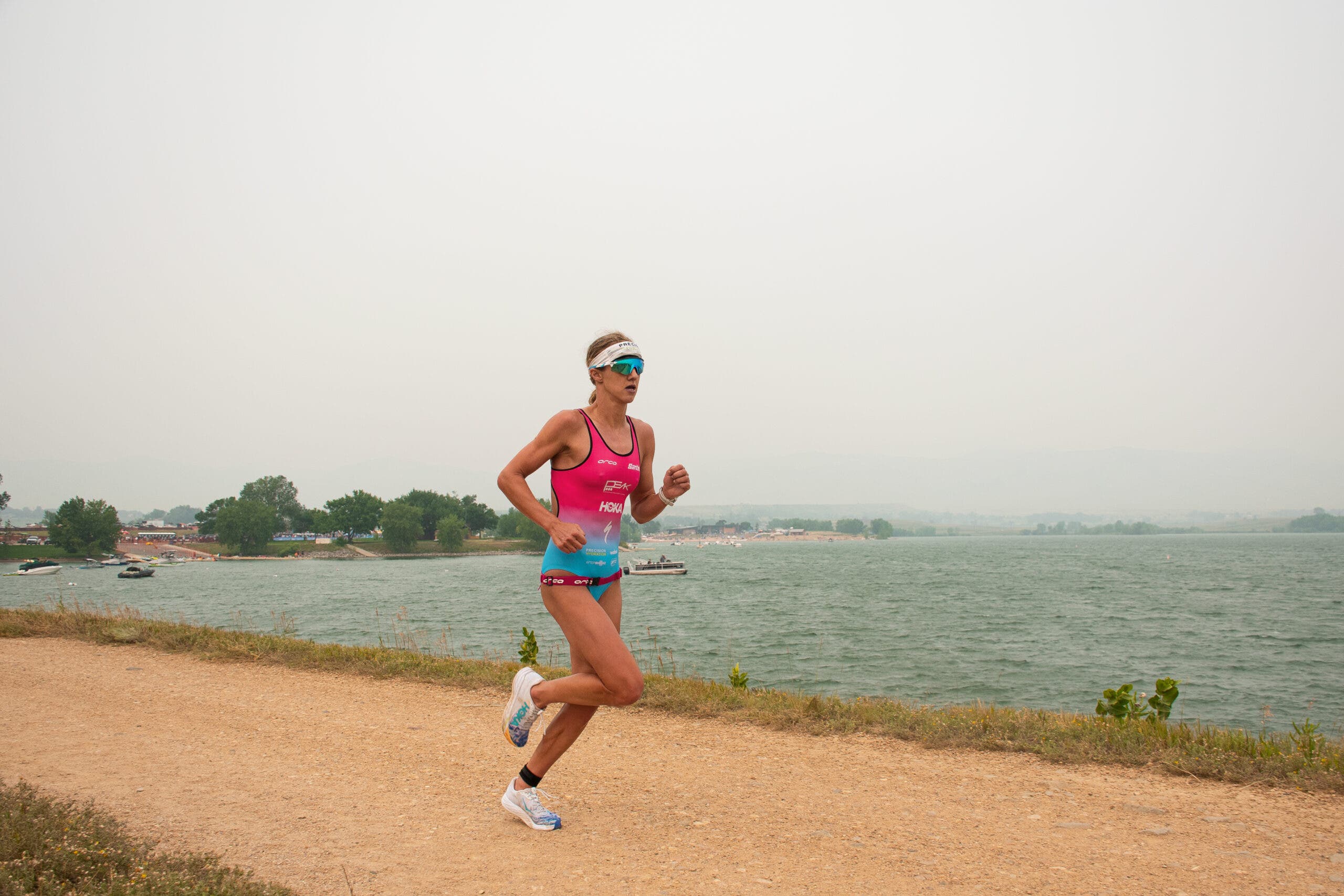Air Pollution Could Be Slowing Down Your Next Ironman

(Photo: Hannah DeWitt/Triathlete)
Last year, the Intergovernmental Panel on Climate Change at the United Nations issued a report portraying a dire picture of where things stand after a century-and-a-half of human-impacted climate change. “Global warming is dangerously close to spiraling out of control,” it said. “The world is already certain to face further climate disruptions for decades, if not centuries, to come.”
Wildfires
In many parts of the world, these changes are being seen in the form of prolonged and severe drought combined with extreme heat in the summer that has led to massive wildfire seasons every year. While wildfires have always been a natural part of renewal, the severity and extent of the fires over the past decade has been exceptional and the cost in terms of lives lost and property destroyed has been immense. In 2020 and 2021, 4.3 million acres and 2.5 million of acres, respectively burned—a huge increase from the previous five year average of 1.6 million acres according to Cal Fire. And yet, the number of wildfires has remained relatively steady. In other words, the same amount of fires are doing substantially more damage.
Another way in which wildfires are having an important impact even on communities far removed from the fires themselves is through effects on air quality. Wood smoke contains many toxic materials in the form of particulate matter and gases that can be dispersed for hundreds and even thousands of miles away from the point of origination.
Air pollution is estimated to significantly affect human health, causing up to 7 million premature deaths annually with an even larger number of hospitalizations and days of sick leave, according to an article in Current Environmental Health Reports. The actual impact in terms of disease and death is very hard to come by, and these are only estimates but observational studies have shown that when air quality is poorer, respiratory and cardiac diseases are higher with associated morbidity and mortality.
Elite athletes have also been shown to have significant impairment in lung function when air quality is poorer, including when there is increased smoke in the air. Some athletes have even shown signs of developing asthma following prolonged exposure to poor quality air, authors in a piece from Immunology and Allergy Clinics of North America write.

Digging into the data
A new study to be published in the fall in the journal Economics and Human Biology will report on exactly how much air quality impacts the performance of the participants of Ironman triathlons. The authors retrospectively evaluated the results of five Ironman triathlons held in the continental United states over a seven year period and cross referenced them with air-quality data as gathered by monitoring stations operated by the Environmental Protection Agency as close as possible to each race venue. They then controlled for other conditions like ambient temperature, wind speed, and month of the year—though the profile of the course was not considered.
To try and ensure that they were only looking at seasoned athletes, the authors excluded anyone who had not participated in at least three Ironman races, leaving them a total subject pool of just under four thousand. They then compared how differing air pollutants impacted overall times as well as the times for the individual disciplines of the race among age groupers, professionals, and men versus women.
The primary pollutants that the authors were interested in were ozone, which is principally emitted by automobiles and factories and particulate matter 2.5 microns or smaller in size (PM2.5). This matter when present in significant amounts causes haziness in the air and is a common byproduct of wildfires and manufacturing.
The results were unsurprising, though some of the vagaries contained within them are of interest. As air pollution levels rose, overall performance times as well as times for each of the swim bike and run fell. For example, when ozone levels were higher than average, overall times increased by almost ten minutes (1.24% of the average time). For a similar increase in PM2.5 the increase in time was almost five minutes (0.56%). These differences were similar across men and women. However, professional athletes did not seem to show any performance decrease as air pollution increased.
When looking at the results for the swim, bike, and run individually, things became much more nuanced. For example, ozone concentrations impacted swimming performances for age groupers and professionals, but women were slightly less affected than men, and professionals much less than age groupers. PM2.5 had a much higher effect on professional athletes during the bike than it did on age groupers, but they were much less affected during the swim. All of this indicates a complex and fluid interaction of environment and physiology.
RELATED: How Air Pollution Affects Endurance Athletes
What to do
Knowing that triathlon performance is affected by air quality, what can a triathlete do to anticipate the impact of environmental conditions on their potential ability to compete? To assist with this, the Air Quality Index (AQI) from the Environmental Protection Agency can be helpful.
The AQI measures major air pollutants, including particle pollution and ground level ozone. The AQI is graded on a 500 point scale with 0-50 being good, 300-500 being hazardous and various gradations between corresponding to escalating levels of potential harm. Athletes can download the airnow.gov app for your smartphone or visit airnow.gov, and review the AQI for an entered zip code in order to determine the air quality prior to a race.
It used to be that when air quality was anticipated to be poor, athletes could simply exercise at times early in the morning or evening when the contributions of automobiles were less and the AQI would be better, but with wildfires this is no longer the case. Now, time of day matters less, and geography is a more important predictor of poor air quality during wildfire season. In addition, given that an Ironman will eclipse the better part of an entire day, knowing the worst AQI can best inform the likely impact on overall performance.
The authors of the paper are clear that they do not think that their results will or should discourage anyone from participating in these kinds of events. They recognize the sacrifices that athletes make in order to get to the start line of an Ironman and that knowing the AQI on race day is unlikely to deter anyone from participating. Still, they also acknowledge that Ironman triathlons have a significant amount of participants who do not finish and they question whether or not that number is influenced by AQI and even if that impacted their results. Since they only looked at those who finished the event, is it possible that a subset, possibly large, of those who did not finish were so negatively impacted by poor air quality that it caused them to drop out—and that the results of their study would be even more dramatic if that was the case?
If the impacts of climate change continue to result in worsening air quality it will be interesting to revisit this question in the future and see if DNF rates are linked to AQI in a meaningful fashion. For now, keep training and pay attention to the air that you breathe.
RELATED: Hotter, Harder, and More Expensive: Why Triathletes Should Care About Climate Change